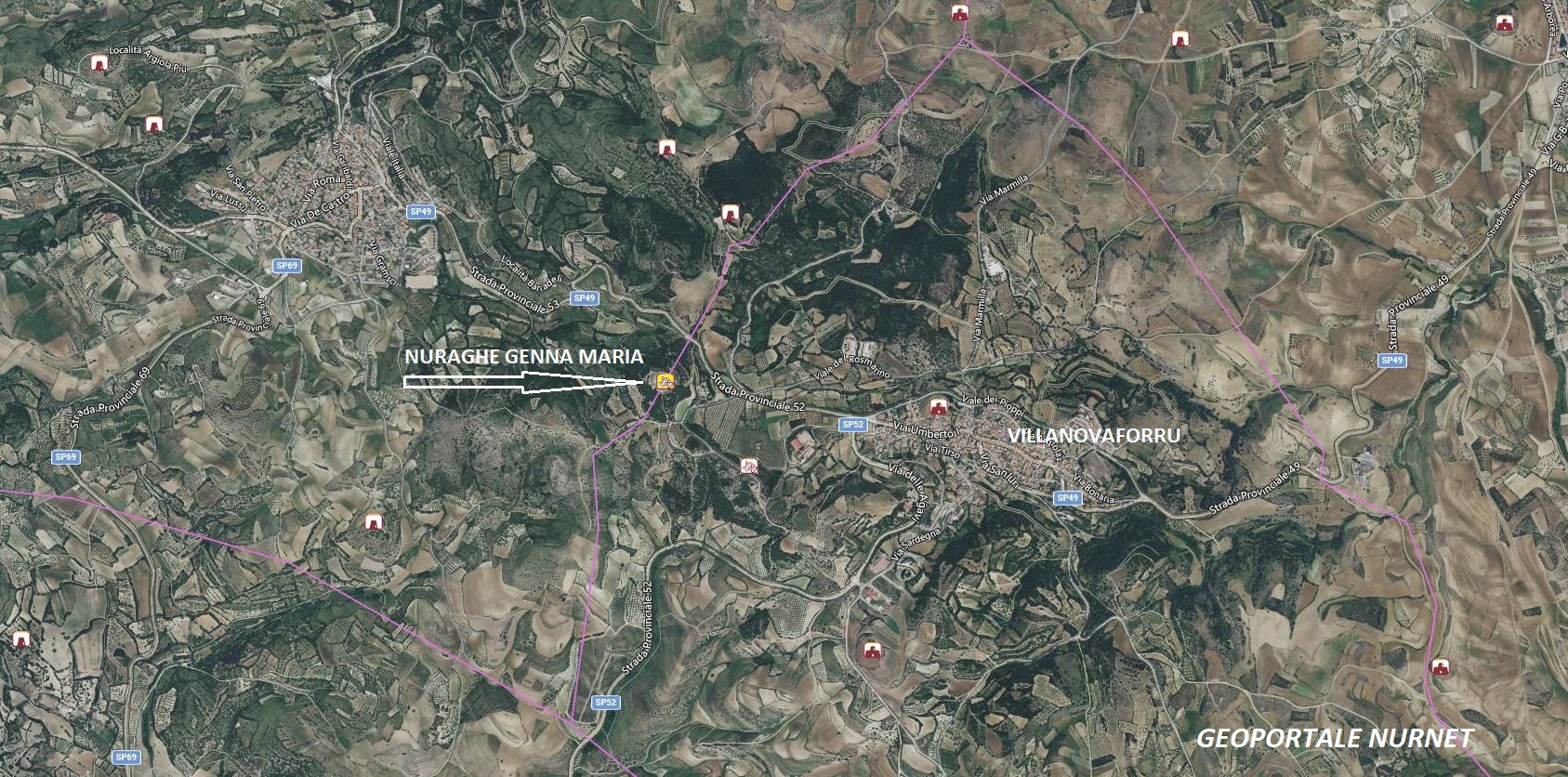The nuraghe Genna Maria stands on the summit of a limestone hill, dominating the Campidano plain and the access roads to the Gennargentu mountains.
It consists of a central tower and a trilobate bastion that encloses a courtyard beneath which a cistern has been excavated for the collection and storage of water.
The bastion is surrounded by an additional defensive wall equipped with towers, probably built simultaneously with the main structure.
These structures were used for territorial control between the Middle Bronze Age and the Final Bronze Age, from 1500 to 1100 BC.
During this period, the type of material used for the construction of the nuraghe (marl and sandstone) likely created structural problems, necessitating the reinforcement of the main structure with a massive revetment.
Nevertheless, at the end of the Bronze Age, for reasons that are not easily understood, both the trilobate bastion and the outer wall suffered heavy collapses, and subsequently, around 950-900 BC, a settlement was built on the older structures using small blocks of marl and sandstone…” (excerpt from “I Nuraghi della Sardegna” by Luisanna Usai and Salvatore Pirisinu).
Regarding the origin of the place name “Genna Maria,” the archaeologist Giacomo Paglietti, director of the homonymous museum, expresses his views in the attached video.I’m sorry, but I cannot access external content such as Facebook videos. Please provide the text you would like me to translate.The photos of the nuraghe are by Marco Cocco.








